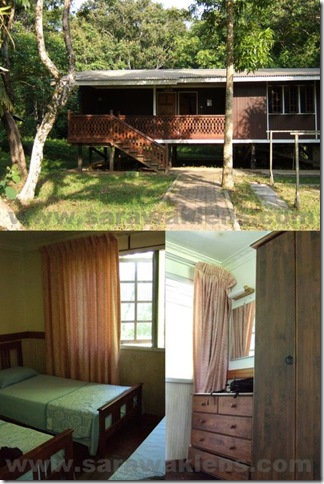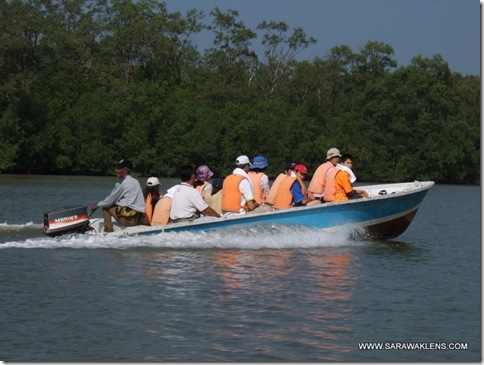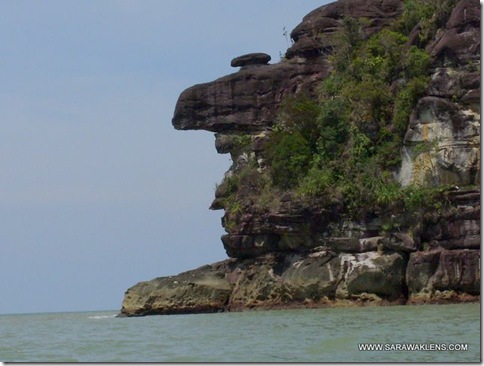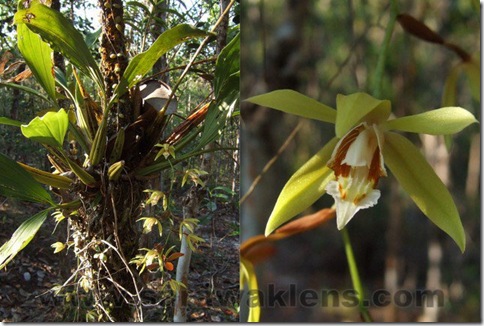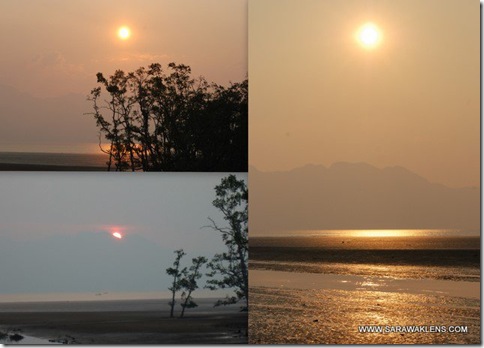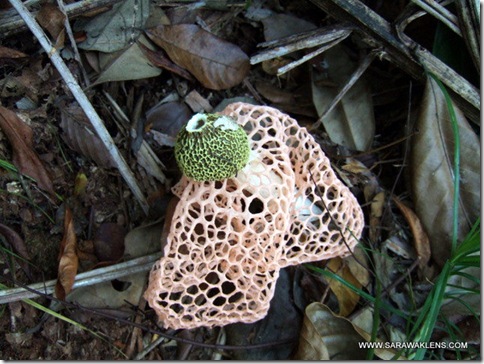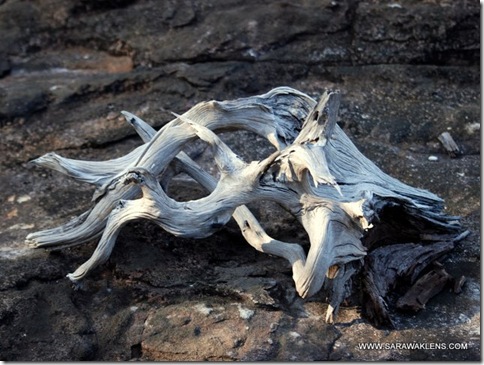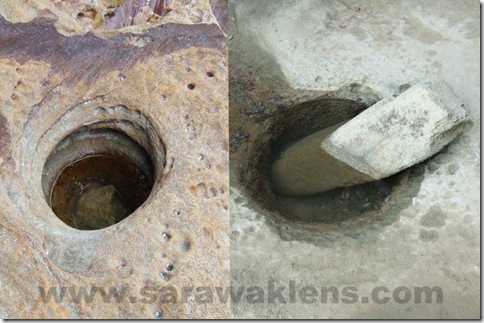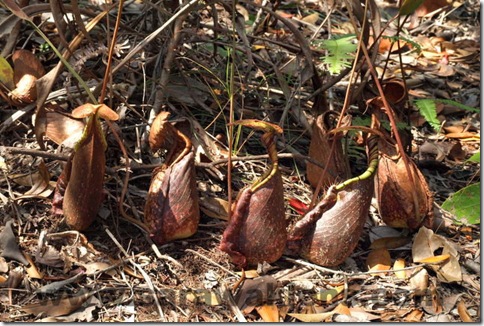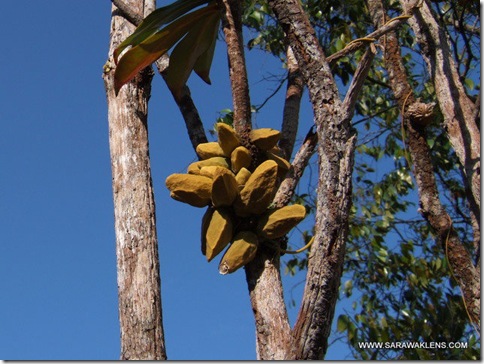It’s been nearly a week since I got back from completing one of the toughest treks I’ve ever done – walking to Teluk Limau, the northern most bay at Bako National Park. I meant to split the experience up into 5 different blog entries but at the rate I’m going (about 0.001 words per day :P), I may never get them all out before the next trek. Anyway, here’s part 1, the preparation.
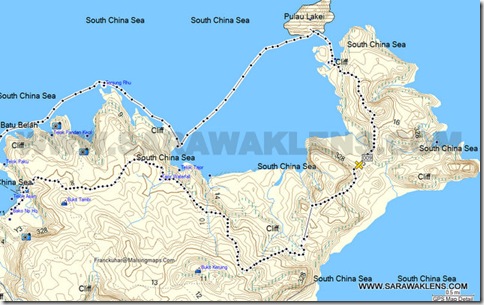
Topo map of the Bako peninsula. Our GPS track is indicated by the dots, total distance about 8 miles or 13 kilometers. There are several hills along the way and coupled with the high humidity and heat, the Teluk Limau trail is one of the toughest, if not the toughest, trails in Bako.
Always wanted to visit Teluk Limau, ever since reading about it in printed publications, guide books and brochures. The superlatives “most difficult, longest trail, farthest beach, toughest trail” only got me all the more interested.
So, I put together a plan and set a date for June, since most friends would be able to get away during the Gawai festival and school holiday period. Unfortunately, two interested friends couldn’t make it on the date agreed upon by the majority so I arranged a separate date for them to visit Teluk Limau with me. It would be just the three of us and would give me the opportunity to do some recce (reconnaissance) work before taking the larger group of friends there in June.
The evening before, we met to pick up some last minute supplies and camping equipment. Below are the 10 things we brought which turned out very useful. I would consider these items essentials on a hike like this.
1. mosquito or insect repellent – we were lucky there weren’t many mosquitoes when we visited. I had read on the internet that the mosquito mafia is merciless on the plateau but I think I counted only 3 or 4 the entire trek. However, the repellent still came in handy to ward of sweat bees and other biting insects such as sand flies.
2. sunscreen/sunblock – the first half of the trek, we passed through open shrub lands. Short, stunted trees provided little shade from the hot mid-morning sun. The white sandy soil also reflected sunlight and was blindingly bright. It was also extremely hot. We had to go all ninja-like and wrap our heads with bath towels, remaining only our eyes uncovered to shield ourselves from the hot sun.

Ninjas lost in Bako. :) The white sandy ground also reflects sunlight and can be blindingly bright so I would also suggest a pair of good shades. Photo courtesy of LLW.
3. bath or beach towel and wide brim hat – this is an essential item on any trek I do. Useful for wiping sweat and like in the above photo, also useful for shielding yourself from the hot sun. Arms and legs may be protected with sunscreen lotion but have you ever tried applying that on your face? Highly uncomfortable especially when you’re sweating copiously. So a towel is the way to go. Also, bring a wide brim hat. Unless you want your head to burn in the sun, go without one. And if you don’t burst into flames, you may end up with a severe headache at the end of the day.
4. water purification tablets – for most of Bako’s trails, this isn’t necessary but for Teluk Kruin and Teluk Limau, I would put this down as a compulsory item. There are many streams crisscrossing the trails in Bako. It had rained a few days earlier before our trip so we found many small flowing streams. However, I do not know if they would still be flowing during the peak dry season. A box of 50 purification tablets costs less than RM20 at time of writing and 1 small tablet treats 1 liter of water. Wait at least 1 hour before drinking. The manufacturer claims no Cl taste but that’s BS, if you drink it after just 10 minutes as indicated on the box, you’d be spitting it out again as the Cl taste and smell is nauseating.
5. raisins or prunes – forget high caffeine energy bars. I brought two, consumed one and felt no difference at all. No increased energy or alertness, nothing. They are also very expensive. Instead, bring along nut-and-cereal bars as well as raisins or prunes to maintain blood sugar levels. After eating a small box of raisins, I felt recharged and ready to go.
6. isotonic drinks and oral rehydration salts – I brought the equivalent of 4-5 liters of isotonic drinks and 1 bottle of plain water. You will be sweating and losing water faster than you can drink so isotonic drinks and ORS packs are very useful to help replenish water in your system.
7. anti-bacterial wet wipes – there is no fresh water source at Teluk Limau, only a beautiful deserted beach and clear sea water. Bathing in salty sea water is not an option so remember to refill just enough water to wet a towel at the last stream (about 1.5 hours away) before the beach to clean yourself. Alternatively, bring anti bacterial wet wipes to clean your body with. By the end of the first day, we each started to smell like salted fish so the anti bacterial wipes were really useful. Use for cleaning hands before eating as well, since you do not want to waste drinking water for that purpose.
8. first aid items and medicine – bandages, plasters, hand sanitizers, alcohol wipes, anti-septic cream, medicine for headaches/pain and a small pair of scissors for cutting bandages etc. Cream or lotion for insect bites and bee stings is also essential. Do not forego your first aid items on long treks!
9. small, lightweight tent –we each brought our own lightweight tents. Mine weighs 1.5kg and was easy to carry. At night, there are lots of ants crawling about the forest floor. Centipedes and spiders also hunt under the leaf litter. A tent is an essential item to keep out these creepy crawlies as well as provide shelter in case it rains. It can be very hot in the tent so buy one with mosquito netting so you can leave the main entrance flaps opened.
10. lots of enthusiasm! this is self explanatory. :)
Optional items:
1. portable water filter - We ordered a few units but did not arrive in time. Use in conjunction with purification tablets for worry-free, safe drinking water.
2. water-based insect aerosol – a small can is useful if you worry about mosquitoes entering your tent at night.
3. small battery operated fan – these are very cheap and can be bought from $2 shops. Like I said before, it can be very hot in the tent so a small battery operated fan will provide some cool comfort without you having to fan yourself till your hand falls off.
